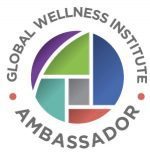Iron deficiency is a common concern, especially among older women, both pre, during and post-menopause. The symptoms of low iron, such as fatigue, weakness and pale skin, can significantly impact one’s quality of life.It’s crucial to remember that an iron imbalance can result from various factors and a healthcare professional’s guidance is essential. Always consider getting your iron levels tested for an accurate assessment.
My top five foods to boost your iron levels are:
- Organic Beef Liver and Spleen: One of the most potent sources of heme iron, the type of iron most efficiently absorbed by the body, is organ meats like beef liver and spleen. These nutrient-dense superfoods provide a significant iron boost while also delivering essential vitamins and minerals, such as vitamin B12, which is crucial for iron absorption. For those that find organ meats a little daunting, consider giving Cell Squared’s Organic Grass-Fed Beef Liver & Spleen Capsules a try – hailed as the ‘ultimate natural iron supplement’. These capsules can either be taken as is or opened and added to various dishes like bolognese, curry, soup, or blended into your smoothies These freeze-dried beef liver and spleen capsules have undergone rigorous independent lab testing and verification, setting a gold standard in the market for nutrient quality.
Oysters and Shellfish
Oysters and shellfish are nutrient-packed treasures from the sea and are some of the richest sources of heme iron, which is the type of iron most easily absorbed by the body. Just a small serving of oysters can provide a significant portion of your daily iron needs. A 100 gram serving of cooked oysters can contain up to 7 milligrams of iron, which is about 39% of the recommended daily intake for adult men and women.
In addition to their iron content, oysters and shellfish are also rich in other essential nutrients like zinc, vitamin B12 and omega-3 fatty acids, making them an excellent choice for overall health and wellbeing.
Organic Poultry/Chicken
Organic poultry, particularly chicken, is another great source of heme iron. A 100-gram serving of cooked chicken provides around 0.7 milligrams of iron, making it a valuable addition to your iron-rich diet. Organic poultry is a preferred choice because it tends to have a lower risk of containing antibiotics and hormones, which can affect your overall health negatively.
Chicken is also a versatile protein that can be prepared in various delicious ways, making it easy to incorporate into your meals regularly.
Wild Caught Fish
Fish, such as salmon, tuna, and sardines, is not only an excellent source of high-quality protein but also a good source of non-heme iron, the type of iron found in plant-based foods. While non-heme iron is not as easily absorbed as heme iron, consuming vitamin C-rich foods alongside fish can enhance its absorption. Salmon, for example, contains approximately 0.6 milligrams of iron per 100 gram serving, making it a nutritious choice for those seeking to increase their iron intake. Additionally, fish is a rich source of omega-3 fatty acids, which have numerous health benefits, including promoting heart health.
Red Meat
Red meat, particularly beef, is renowned for its high iron content. A 100 gram serving of cooked beef can provide as much as 2.7 milligrams of iron. This type of meat contains both heme and non-heme iron, making it a double threat for combating iron deficiency.
As with all things, our diet should be balanced, so consider how red meat fits into your overall macronutrient consumption, this means the amount you’re eating is relevant to your unique requirements.
Maintaining optimal iron levels is essential for older women, especially during and after menopause when the risk of iron deficiency may increase. Incorporating iron-rich foods into your diet can be a delicious and nutritious way to support your iron needs.








